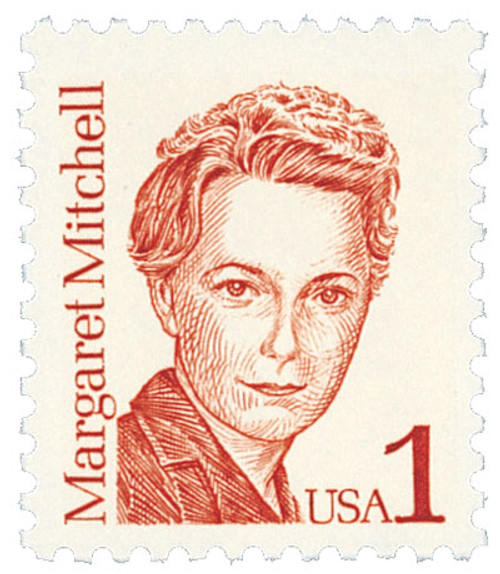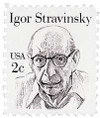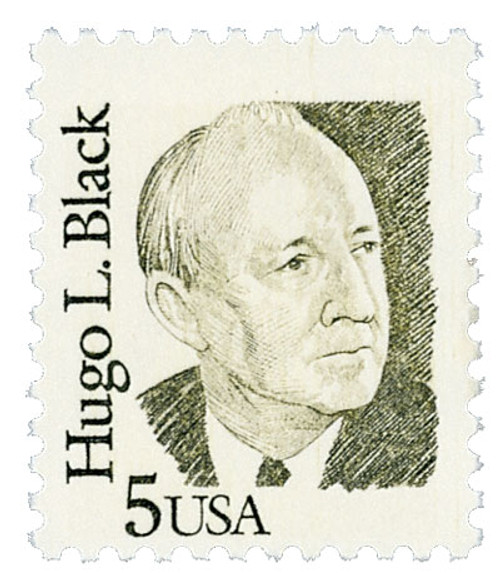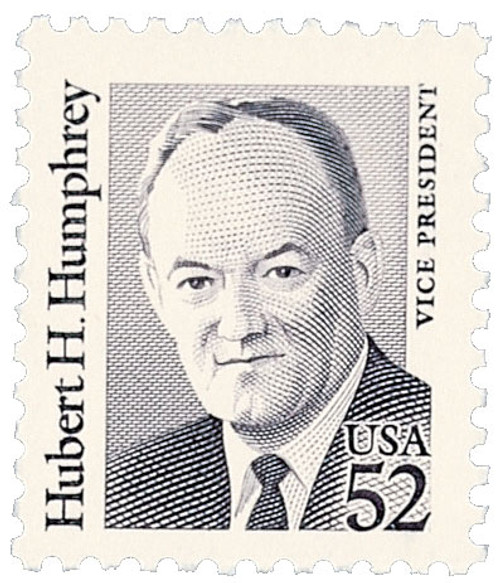
# 1845 - 1982 2c Great Americans: Igor Stravinsky
U.S. #1845
1982 2¢ Igor Stravinsky
Great Americans
- Issued for Stravinsky’s 100th birthday
- 8th stamp in Great Americans Series
- 1st definitive to picture a composer; 2nd stamp to picture foreign-born composer
Stamp Category: Definitive
Series: Great Americans
Value: 2¢; used predominantly as a “change maker”
First Day of Issue: November 18, 1982
First Day City: New York, NY
Quantity Issued: Unknown
Printed by: Bureau of Engraving & Printing
Printing Method: Engraved
Format: Panes of 100
Perforations: 11 x 10.5
Color: Brown black
Why the stamp was issued: To provide a 2¢ stamp for the Great Americans Series. This was the first definitive to picture a composer and the second US stamp to picture a foreign-born composer (after the 1940 Famous Americans stamp depicting Irish-born Victor Herbert).
The most common use for this stamp was as a “change maker.” As Don McDowell of the Stamps Division pointed out, “When a small post office without a meter machine quotes a parcel post rate of $1.86 to a customer, they’d better have the ‘change maker’ stamps on hand to hit it exactly.” These low denominations were also useful in the event of a rate change.
About the stamp design: Portrait artist Burt Silverman provided the artwork for this stamp, depicting Stravinsky in the later years of his career.
First Day City: The First Day ceremony for this stamp was held at the New York State Theatre at Lincoln Center in New York City, New York. Stravinsky’s music was played throughout the ceremony.
About the Great Americans Series: The Great Americans Series was created to replace the Americana Series. The new series would be characterized by a standard definitive size, simple design, and monochromatic colors.
This simple design included a portrait, “USA,” the denomination, the person’s name, and in some cases, their occupation or reason for recognition. The first stamp in the new series was issued on December 27, 1980. It honored Sequoyah and fulfilled the new international postcard rate that would go into effect in January 1981.
The Great Americans Series would honor a wider range of people than the previous Prominent Americans and Liberty Series. While those series mainly honored presidents and politicians, the Great Americans Series featured people from many fields and ethnicities. They were individuals who were leaders in education, the military, literature, the arts, and human and civil rights. Plus, while the previous series only honored a few women, the Great Americans featured 15 women. This was also the first definitive series to honor Native Americans, with five stamps.
The Bureau of Engraving and Printing (BEP) produced most of the stamps, but private firms printed some. Several stamps saw multiple printings. The result was many different varieties, with tagging being the key to understanding them. Though there were also differences in perforations, gum, paper, and ink color.
The final stamp in the series was issued on July 17, 1999, honoring Justin S. Morrill. Spanning 20 years, the Great Americans was the longest-running US definitive series. It was also the largest series of face-different stamps, with a total of 63.
Click here for all the individual stamps and click here for the complete series.
History the stamp represents: Composer Igor Fyodorovich Stravinsky was born on June 17, 1882 (or June 5 on the Julian Calendar), in Oranienbaum, Russia (present-day Lomonosov). He is considered one of the most influential composers of the 20th century.
Raised in St. Petersburg, Igor’s father was Fyodor Stravinsky, a bass singer for the Mariinsky Theater. After attending a performance of Tchaikovsky’s The Sleeping Beauty in 1890, Stravinsky was mesmerized. By the age of 14, he mastered Mendelssohn’s Piano Concerto in G minor. Despite his clear talent and interest in music, Igor’s parents wanted him to become a lawyer, enrolling him in the law program at the University of St. Petersburg in 1901. In four years, he attended less than 50 classes. The school was closed in 1905 after the Bloody Sunday massacre. That same year, he began taking lessons with Rimsky-Korsakov, who quickly became like a second father to Stravinsky.
One of his earliest performed compositions was Feu d’artifice (Fireworks), in St. Petersburg. Sergei Diaghilev, director of the Ballets Russes in Paris, attended this performance and was so impressed that he hired Stravinsky to compose a full-length ballet score, The Firebird, which premiered in Paris in 1910. Shortly after, he moved to Switzerland where he wrote three more ballets for the Ballets Russes, including The Rite of Spring.
Stravinsky’s modernist ballet, The Rite of Spring, premiered in Paris on May 29, 1913. It was revolutionary for the time, employing inharmonic notes and unusual choreography. The audience, used to the elegance of more conventional musicals, began to boo within the ballet’s first few minutes. Soon those in the minority who liked the music began to argue with those who did not. Arguments quickly escalated to fighting and the police were called. At intermission the police calmed the crowd, but once the second half began, the fighting resumed, and riots broke out. Stravinsky was so shocked at the audience’s reaction he left the theater before the ballet was over.
Today, Rite of Spring is considered a classic, and the riot at its premiere is one of the most famous classical music brawls in history. “Rite of Spring… transformed the way composers thought about rhythmic structure, and was largely responsible for Stravinsky’s enduring reputation as a musical revolutionary, pushing the boundaries of musical design.”
In the late 1910s, Stravinsky began working with philanthropist Werner Reinhart, who provided financial backing for several of his works. Stravinsky then spent nearly 20 years in France, working with the French piano manufacturer Pleyel. In 1940, he moved to Los Angeles, California, where he conducted concerts with the LA Philharmonic at the Hollywood Bowl. Stravinsky made his last move in 1969, to New York, where he died two years later on April 6, 1971. He has been honored with a star on the Hollywood Walk of Fame and a Grammy Lifetime Achievement Award.
U.S. #1845
1982 2¢ Igor Stravinsky
Great Americans
- Issued for Stravinsky’s 100th birthday
- 8th stamp in Great Americans Series
- 1st definitive to picture a composer; 2nd stamp to picture foreign-born composer
Stamp Category: Definitive
Series: Great Americans
Value: 2¢; used predominantly as a “change maker”
First Day of Issue: November 18, 1982
First Day City: New York, NY
Quantity Issued: Unknown
Printed by: Bureau of Engraving & Printing
Printing Method: Engraved
Format: Panes of 100
Perforations: 11 x 10.5
Color: Brown black
Why the stamp was issued: To provide a 2¢ stamp for the Great Americans Series. This was the first definitive to picture a composer and the second US stamp to picture a foreign-born composer (after the 1940 Famous Americans stamp depicting Irish-born Victor Herbert).
The most common use for this stamp was as a “change maker.” As Don McDowell of the Stamps Division pointed out, “When a small post office without a meter machine quotes a parcel post rate of $1.86 to a customer, they’d better have the ‘change maker’ stamps on hand to hit it exactly.” These low denominations were also useful in the event of a rate change.
About the stamp design: Portrait artist Burt Silverman provided the artwork for this stamp, depicting Stravinsky in the later years of his career.
First Day City: The First Day ceremony for this stamp was held at the New York State Theatre at Lincoln Center in New York City, New York. Stravinsky’s music was played throughout the ceremony.
About the Great Americans Series: The Great Americans Series was created to replace the Americana Series. The new series would be characterized by a standard definitive size, simple design, and monochromatic colors.
This simple design included a portrait, “USA,” the denomination, the person’s name, and in some cases, their occupation or reason for recognition. The first stamp in the new series was issued on December 27, 1980. It honored Sequoyah and fulfilled the new international postcard rate that would go into effect in January 1981.
The Great Americans Series would honor a wider range of people than the previous Prominent Americans and Liberty Series. While those series mainly honored presidents and politicians, the Great Americans Series featured people from many fields and ethnicities. They were individuals who were leaders in education, the military, literature, the arts, and human and civil rights. Plus, while the previous series only honored a few women, the Great Americans featured 15 women. This was also the first definitive series to honor Native Americans, with five stamps.
The Bureau of Engraving and Printing (BEP) produced most of the stamps, but private firms printed some. Several stamps saw multiple printings. The result was many different varieties, with tagging being the key to understanding them. Though there were also differences in perforations, gum, paper, and ink color.
The final stamp in the series was issued on July 17, 1999, honoring Justin S. Morrill. Spanning 20 years, the Great Americans was the longest-running US definitive series. It was also the largest series of face-different stamps, with a total of 63.
Click here for all the individual stamps and click here for the complete series.
History the stamp represents: Composer Igor Fyodorovich Stravinsky was born on June 17, 1882 (or June 5 on the Julian Calendar), in Oranienbaum, Russia (present-day Lomonosov). He is considered one of the most influential composers of the 20th century.
Raised in St. Petersburg, Igor’s father was Fyodor Stravinsky, a bass singer for the Mariinsky Theater. After attending a performance of Tchaikovsky’s The Sleeping Beauty in 1890, Stravinsky was mesmerized. By the age of 14, he mastered Mendelssohn’s Piano Concerto in G minor. Despite his clear talent and interest in music, Igor’s parents wanted him to become a lawyer, enrolling him in the law program at the University of St. Petersburg in 1901. In four years, he attended less than 50 classes. The school was closed in 1905 after the Bloody Sunday massacre. That same year, he began taking lessons with Rimsky-Korsakov, who quickly became like a second father to Stravinsky.
One of his earliest performed compositions was Feu d’artifice (Fireworks), in St. Petersburg. Sergei Diaghilev, director of the Ballets Russes in Paris, attended this performance and was so impressed that he hired Stravinsky to compose a full-length ballet score, The Firebird, which premiered in Paris in 1910. Shortly after, he moved to Switzerland where he wrote three more ballets for the Ballets Russes, including The Rite of Spring.
Stravinsky’s modernist ballet, The Rite of Spring, premiered in Paris on May 29, 1913. It was revolutionary for the time, employing inharmonic notes and unusual choreography. The audience, used to the elegance of more conventional musicals, began to boo within the ballet’s first few minutes. Soon those in the minority who liked the music began to argue with those who did not. Arguments quickly escalated to fighting and the police were called. At intermission the police calmed the crowd, but once the second half began, the fighting resumed, and riots broke out. Stravinsky was so shocked at the audience’s reaction he left the theater before the ballet was over.
Today, Rite of Spring is considered a classic, and the riot at its premiere is one of the most famous classical music brawls in history. “Rite of Spring… transformed the way composers thought about rhythmic structure, and was largely responsible for Stravinsky’s enduring reputation as a musical revolutionary, pushing the boundaries of musical design.”
In the late 1910s, Stravinsky began working with philanthropist Werner Reinhart, who provided financial backing for several of his works. Stravinsky then spent nearly 20 years in France, working with the French piano manufacturer Pleyel. In 1940, he moved to Los Angeles, California, where he conducted concerts with the LA Philharmonic at the Hollywood Bowl. Stravinsky made his last move in 1969, to New York, where he died two years later on April 6, 1971. He has been honored with a star on the Hollywood Walk of Fame and a Grammy Lifetime Achievement Award.




















